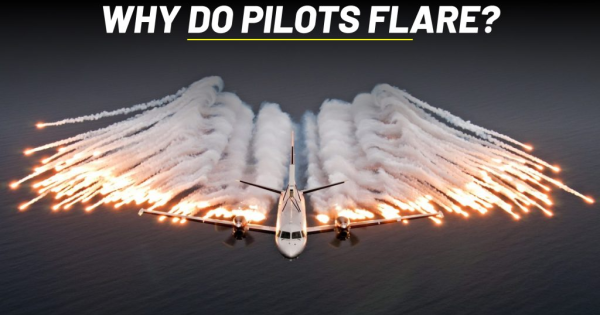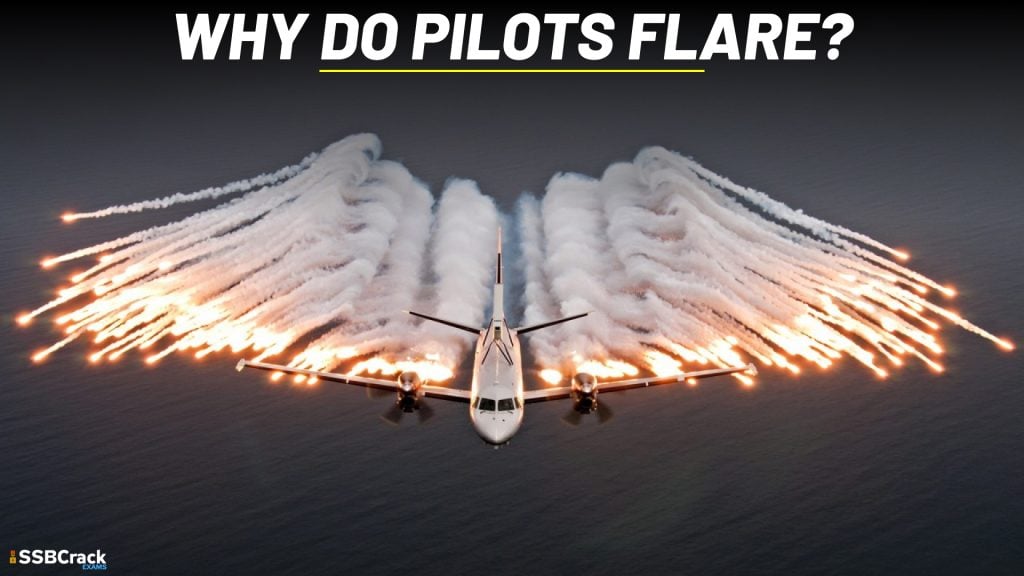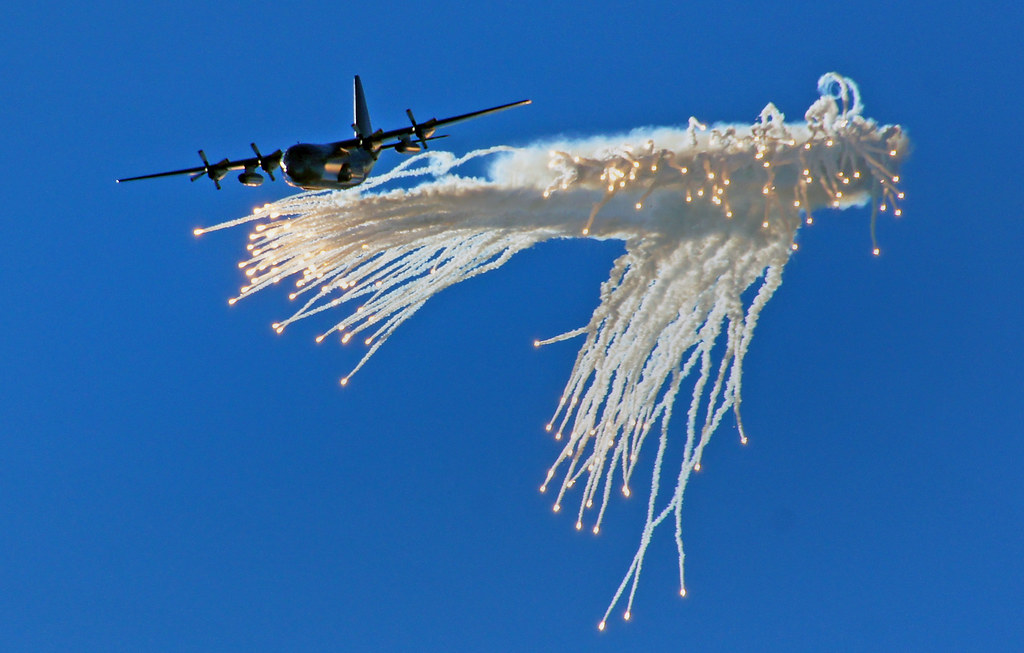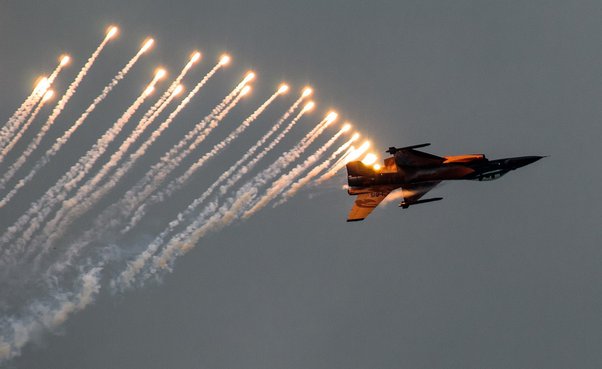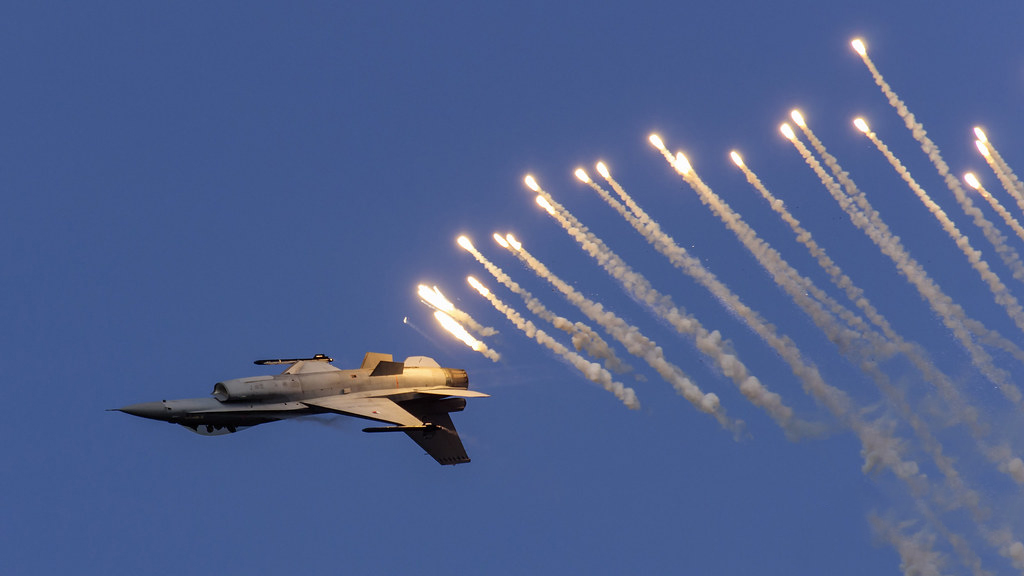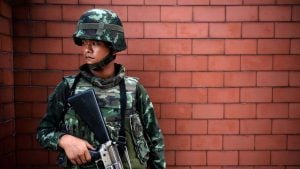Flares are very hot, burning objects that are released from an aircraft to prevent the incoming missile from hitting it. Flares are made up of a special material that ignites instantaneously as soon as it comes in contact with the air. We all have seen in the movies how the pilot sparks a series of lights or flares to dodge incoming missiles. Let us know what are flares and why pilots use flares.
More About Flares
A Flare is also known as a decoy flare which is an aerial infrared countermeasure used by a military aircraft or helicopter to counter an IR (Infrared) surface-to-air or air-to-air missile. Infrared means Heat Seeking. These flares sense the heat of an upcoming live missile and hence tend to protect the aircraft from an attack.
Flares are generally composed of pyrotechnic composition which is a mixture of substances designed to produce an effect of heat and light, sound, gas, or smoke or a combination of these as a result of a nonrestorative self-sustaining exothermic reaction. This pyrotechnic composition is based on magnesium or another hot burning material with a burning temperature equal to or hotter than engine exhaust. This is made so as to make the infrared-guided missile seek out the heat signature from the flare rather than the aircraft’s engine.
Working of a Flare / How Flares are Used?
Flare acts against IR-guided missiles. When IR missiles are launched they are very difficult to find on the radar as they do not emit detectable radar and they are generally found from behind. Sometimes the pilots have their wingman spot the incoming missiles’ smoke trail and alert a launch. When the presence of an IR missile is indicated, flares are released by the aircraft in an attempt to decoy the missile. Some aircraft have the automatic control of releasing while others require a manual request.
After firing the flares, the aircraft generally pulls away at a very sharp angle from the flare and the terminal trajectory of the missile. While turning it reduces the engine power in an attempt to cool the thermal signature. The live missile now gets confused with the change in temperature and flurry of new heat signatures and now starts to follow one of the flares, rather than the aircraft.
Importance of Flares
Flares protect aircraft by forcing infrared threats, such as heat-seeking, surface-to-air, or air-to-air missiles, to lock onto their heat signatures rather than the aircraft’s engine. Each aircraft is loaded with various types of flares depending on mission, location, and requirements.
Does only military aircraft use flares?
No, it’s not necessary that only military aircraft use flares. Apart from military use, some civilian aircraft are also equipped with countermeasure flares. For example, Israeli airline EI AI used its flare technology against an incoming surface-to-air missile to prevent the attack. Similarly many transport helicopters in USA and UK use flare and chaff technology. Commercial airlines which are going into a dangerous area for example above Syria or above any country which is occupied by an active militant group are fitted with chaff or flare technology so as to prevent any SAM (Surface to Air Missile) attack.
To crack the SSB Interview and join the Indian Army as an Officer, You can join our SSB interview live classes batch and we recommend you to Enroll SSB INTERVIEW ONLINE COURSE. Trusted by thousands of defence aspirants.
